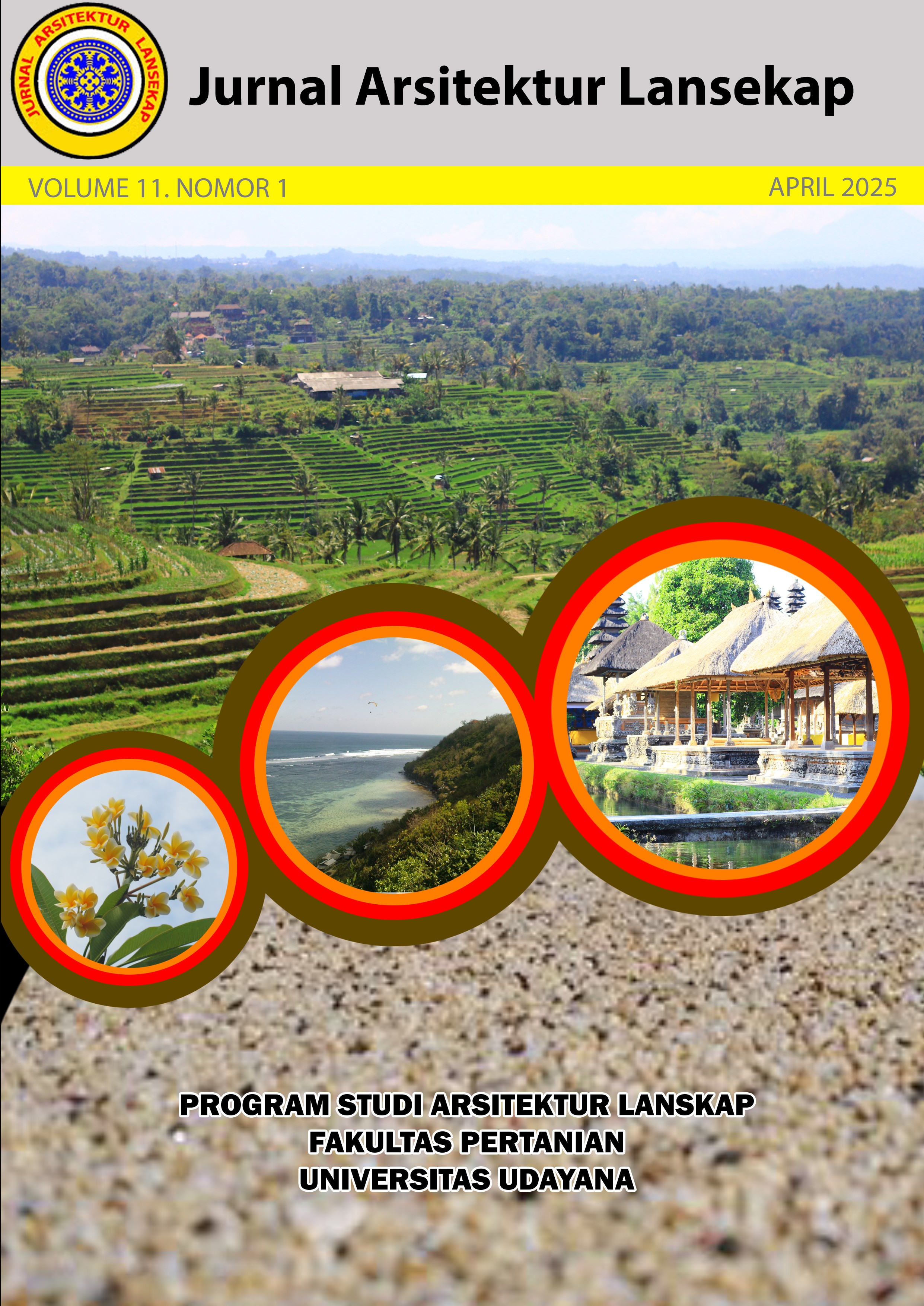Desain taman sensori bagi anak berkebutuhan khusus tunanetra tingkat sekolah dasar
Studi Kasus Sekolah Luar Biasa (SLB) Negeri 1 Denpasar
Abstract
Abstract
Sensory garden is a garden that function to strengthen the ability of five human senses. Therefore, the locating selection of sensory garden should be appropriate in order that the purpose of giving educational facilities and sensory therapy for children with special needs can be carried out optimally. Special Needs School (SLB) is considered approriate because sensory therapy is one of alternatives to strengthen children with special needs ability. SLB Negeri 1 Denpasar is one of public special needs schools located in Denpasar, specifically at Jalan Serma Gede. SLB Negeri 1 Denpasar is being chose because it has a strategic location, which is belong to one of education zones in Denpasar and has an open space therefore it can be used as a therapy zone for school students. Special needs school hosts students with special needs, one of those is visually impaired. Visually impaired children are dependent on the sharpness of their sensory senses, other than vision to identify the surrounding environment therefore sensory recognition supporting facilities are needed for students. There are several things that should be considered in making a sensory garden for visually impaired children without neglacting the aesthetics and function of the sensory garden itself. The design of sensory garden should be made with the capacity, size, and material that appropriate for the activities at sensory garden.
Downloads
References
KEMENDIKBUD, (Kementrian Pendidikan dan Kebudayaan). 2020. “Data Pokok Pendidikan.” 2020. https://dapo.kemendikbud.go.id/sp/2/226000.
Marcus, Claire Cooper, and Marni Barnes. 1999. Healing Gardens for Children. Healing Gardens: Therapeutic Benefits and Design Recommendations. New York: John Wiley and Sons, Inc.
Pullen, Hallahan Kauffman. 2014. Exceptional Learners An Introduction to Special Education Hallahan Kauffman Pullen Twelfth Edition. United States of America: Pearson Edication Limited.
Santrock, John W. 2019. Life-Span Development. New York: McGraw-Hill Higher Education.

This work is licensed under a Creative Commons Attribution-ShareAlike 4.0 International License.
An author who publishes in the Jurnal Arsitektur Lansekap (JAL) agrees to the following terms:
- Author retains the copyright and grants the journal the right of first publication of the work simultaneously licensed under the Creative Commons Attribution-ShareAlike 4.0 License that allows others to share the work with an acknowledgement of the work's authorship and initial publication in this journal
- Author is able to enter into separate, additional contractual arrangements for the non-exclusive distribution of the journal's published version of the work (e.g., post it to an institutional repository or publish it in a book) with the acknowledgement of its initial publication in this journal.
- Author is permitted and encouraged to post his/her work online (e.g., in institutional repositories or on their website) prior to and during the submission process, as it can lead to productive exchanges, as well as earlier and greater citation of the published work (See The Effect of Open Access).
Read more about the Creative Commons Attribution-ShareAlike 4.0 Licence here: https://creativecommons.org/licenses/by-sa/4.0/.







